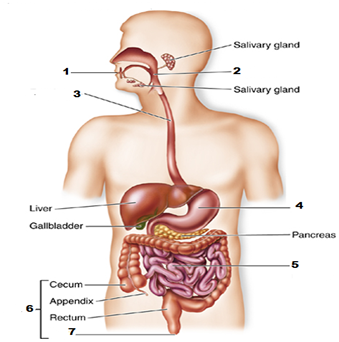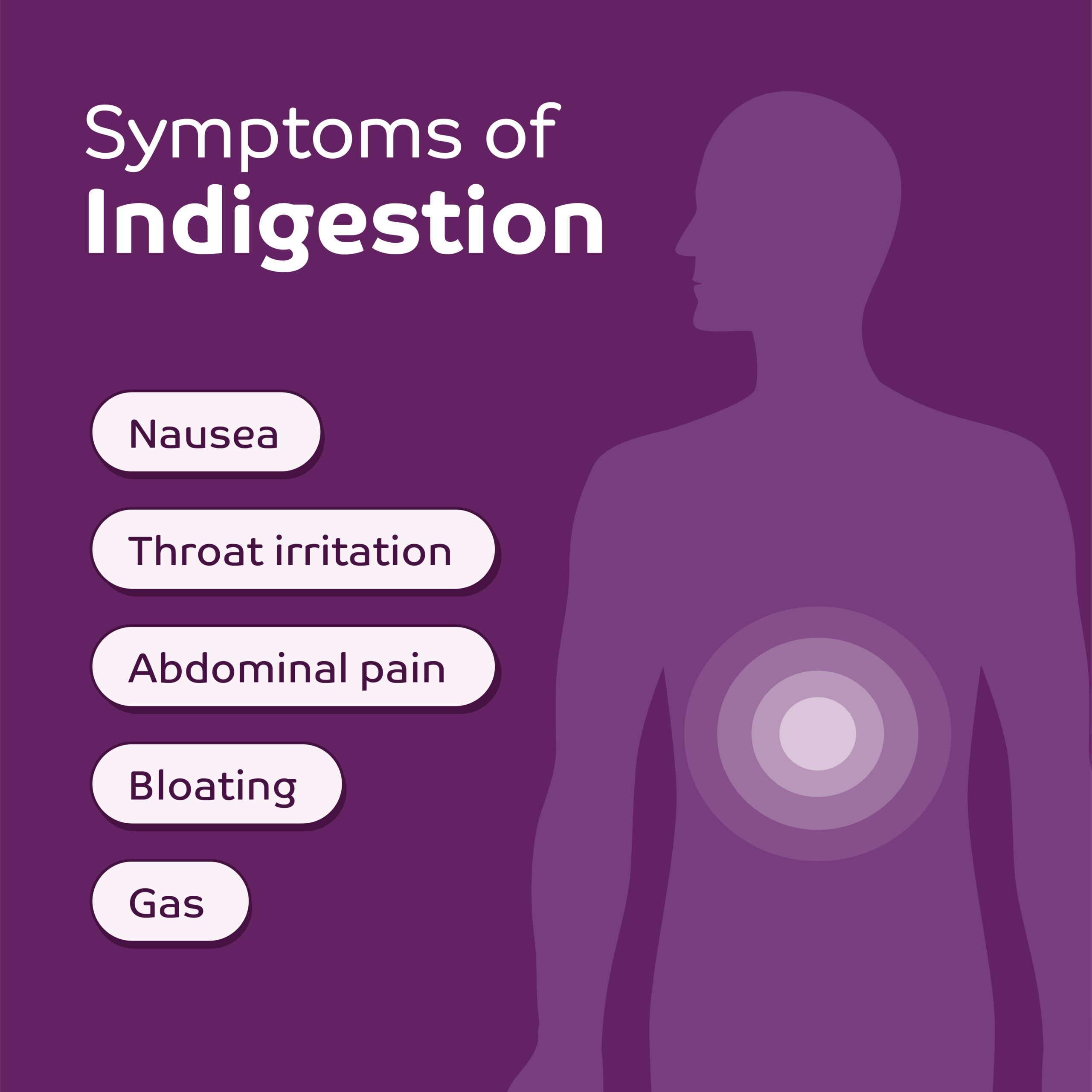Indigestion
Panoramica
L’indigestione, chiamata anche dispepsia o mal di stomaco, è un disagio nella parte superiore dell’addome. L’indigestione descrive alcuni sintomi, come il mal di pancia e una sensazione di pienezza subito dopo aver iniziato a mangiare, piuttosto che una malattia specifica. L’indigestione può anche essere un sintomo di altri disturbi digestivi.

Sebbene l’indigestione sia comune, ogni persona può sperimentare l’indigestione in modo leggermente diverso. I sintomi dell’indigestione possono essere avvertiti occasionalmente o quotidianamente.
L’indigestione può spesso essere alleviata con cambiamenti nello stile di vita e farmaci.

Apparato digerente
Gli organi principali dell’apparato digerente sono il fegato, lo stomaco, la cistifellea, il colon e l’intestino tenue.
Sintomi
Se soffri di indigestione, potresti avere:

- Early fullness during a meal. You haven’t eaten much of your meal, but you already feel full and may not be able to finish eating.
- Uncomfortable fullness after a meal. The feeling of fullness lasts longer than it should.
- Discomfort in the upper abdomen. You feel a mild to severe pain in the area between the bottom of your breastbone and your bellybutton.
- Burning in the upper abdomen. You feel an uncomfortable heat or burning sensation between the bottom of your breastbone and your bellybutton.
- Bloating in the upper abdomen. You feel an uncomfortable sensation of tightness in your upper abdomen.
- Nausea. You feel as if you want to vomit.
I sintomi meno frequenti includono vomito ed eruttazione.
A volte anche le persone con indigestione soffrono di bruciore di stomaco. Il bruciore di stomaco è un dolore o una sensazione di bruciore al centro del torace che può irradiarsi al collo o alla schiena durante o dopo aver mangiato.
Quando rivolgersi a un medico
Una lieve indigestione di solito non è nulla di cui preoccuparsi. Consultare il proprio medico se il disagio dura per più di due settimane.
Contatta subito il tuo medico se il dolore è grave o accompagnato da:
- Unintentional weight loss or loss of appetite.
- Repeated vomiting or vomiting with blood.
- Black, tarry stools.
- Trouble swallowing that gets worse.
- Fatigue or weakness, which may be signs of anemia.
Consultare immediatamente un medico se si ha:
- Shortness of breath, sweating or chest pain radiating to the jaw, neck or arm.
- Chest pain when you’re active or stressed.
Diagnosi
È probabile che il tuo medico inizi con un’anamnesi sanitaria e un esame fisico approfondito. Queste valutazioni possono essere sufficienti se l’indigestione è lieve e non si verificano determinati sintomi, come perdita di peso e vomito ripetuto.
Ma se la tua indigestione è iniziata improvvisamente e stai riscontrando sintomi gravi o hai più di 55 anni, il tuo medico può consigliare:
- Laboratory tests, to check for anemia or other metabolic disorders.
- Breath and stool tests, to check for Helicobacter pylori (H. pylori), the bacterium associated with peptic ulcers, which can cause indigestion.
- Endoscopy, to check for issues in your upper digestive tract, particularly in older people with symptoms that won’t go away. A tissue sample, called a biopsy, may be taken for analysis.
- Imaging tests (X-ray or CT scan), to check for intestinal obstruction or another issue.







